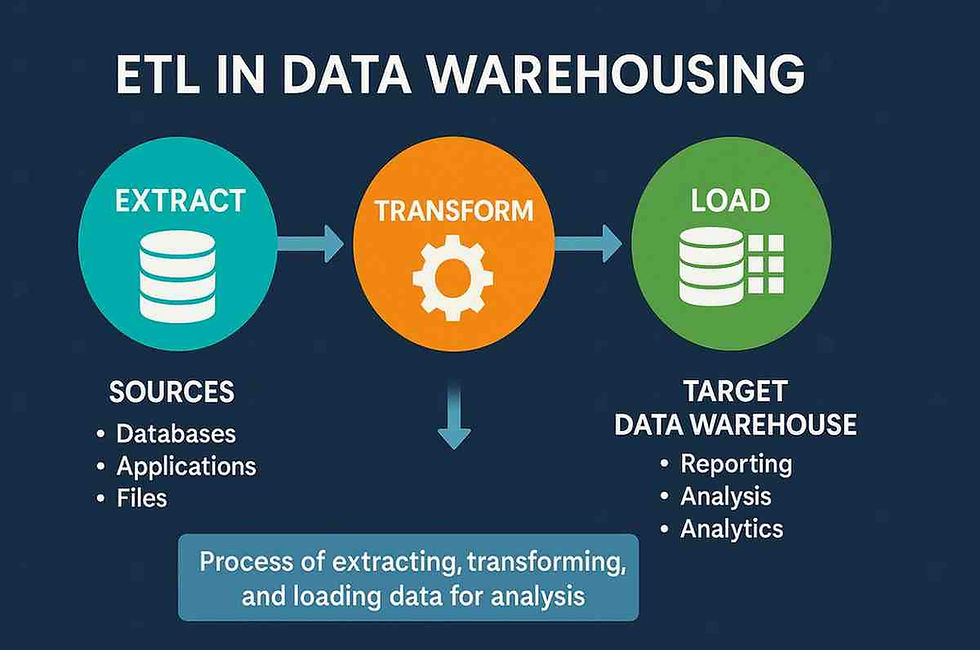Guide to Positive and Negative Testing in Software Testing
- Gunashree RS
- Apr 28
- 7 min read
Introduction to Testing Methodologies
Software testing is a critical aspect of the development lifecycle that ensures applications meet quality standards before reaching end-users. Among the various testing approaches, positive and negative testing stand as fundamental methodologies that complement each other to create comprehensive test coverage. While positive testing verifies that a system functions as expected under normal conditions, negative testing explores how the system handles unexpected or invalid inputs.
According to industry statistics, software bugs cost the global economy approximately $1.1 trillion in 2016 alone. This staggering figure underscores the importance of implementing robust testing methodologies. By incorporating both positive and negative testing strategies, development teams can significantly reduce the likelihood of costly defects reaching production environments.

What is Positive Testing in Software Testing?
Positive testing, also known as "happy path" testing, focuses on validating that software functions correctly when provided with valid and expected inputs. This testing methodology verifies that an application meets its specified requirements under normal operating conditions.
Key Characteristics of Positive Testing:
Expected Inputs: Tests use valid data formats, ranges, and types
Normal Conditions: Simulates standard operating environments
Requirement Validation: Confirms the software meets specified requirements
Expected Path Execution: Follows the primary workflow designed for the feature
Success Verification: Ensures expected outcomes are achieved
Example Scenarios for Positive Testing:
Verifying that a login process works with valid credentials
Confirming that a search function returns relevant results for properly formatted queries
Testing that a form submission succeeds when all required fields contain valid data
Validating that an e-commerce checkout process completes successfully with valid payment information
Checking that the data is correctly saved when a user profile is updated with valid information
Positive testing builds confidence in the core functionality of an application and serves as the foundation of a comprehensive testing strategy. However, relying solely on positive testing is insufficient, as it doesn't account for the many ways users might interact with the system unexpectedly.
What is Negative Testing in Software Testing?
Negative testing, sometimes called "sad path" or "error path" testing, evaluates how software responds to invalid, unexpected, or erroneous inputs and conditions. This approach aims to discover potential vulnerabilities, prevent system crashes, and ensure appropriate error handling.
Key Characteristics of Negative Testing:
Invalid Inputs: Tests use incorrect data formats, out-of-range values, and incompatible types
Error Conditions: Simulates system failures and exceptional circumstances
Boundary Testing: Explores edge cases and limits of acceptable inputs
Security Focus: Identifies potential vulnerabilities and exploits
Robustness Verification: Ensures the system gracefully handles unexpected situations
Example Scenarios for Negative Testing:
Attempting to log in with invalid credentials or malformed inputs
Submitting forms with missing required fields or invalid data formats
Testing API endpoints with improper authentication tokens
Introducing extremely large values to check for buffer overflow vulnerabilities
Interrupting processes mid-execution to verify proper error recovery
Submitting special characters or SQL injection attempts in text fields
Negative testing is essential for building robust applications that can withstand real-world usage patterns, including user errors and potential malicious attacks.
Key Differences Between Positive and Negative Testing
Understanding the distinctions between these testing methodologies helps in developing a balanced testing strategy that ensures comprehensive coverage.
Aspect | Positive Testing | Negative Testing |
Purpose | Verify correct functionality with valid inputs | Validate system resilience with invalid inputs |
Focus | Confirming requirements are met | Finding defects and vulnerabilities |
Input Data | Valid, expected data within normal ranges | Invalid, unexpected, or boundary-case data |
Expected Result | The system accepts input and functions as designed | System rejects input and handles errors gracefully |
Test Cases | Typically fewer and more straightforward | Often more numerous and complex |
Implementation Time | Generally faster to implement | May require more planning and creativity |
Execution Priority | Usually performed first | Typically follows positive testing |
While positive testing confirms that software meets its functional requirements, negative testing ensures it can handle unexpected situations without catastrophic failures. Both are essential components of a robust quality assurance strategy.
Best Practices for Implementing Positive Testing
Implementing effective positive testing requires a methodical approach to ensure comprehensive coverage of expected functionality:
Begin with requirements analysis: Thoroughly understand the specified requirements to identify all standard use cases
Create detailed test cases: Document expected inputs, steps, and outcomes for each test scenario
Prioritize critical functionality: Focus initial testing efforts on core features and common user flows
Use diverse test data sets: Test with various valid inputs within acceptable ranges
Implement test automation: Automate repetitive positive test cases to enable regression testing
Maintain traceability: Link test cases to specific requirements for comprehensive coverage verification
Document all assumptions: Clearly state any assumptions made during test case development
By following these best practices, testing teams can ensure that software meets its fundamental requirements and delivers expected value to users.
Best Practices for Implementing Negative Testing
Negative testing requires creativity and systematic thinking to identify potential failure points:

Think like an adversary: Consider how users might misuse the system, intentionally or accidentally.
Focus on boundary conditions: Test at the edges of acceptable input ranges
Consider security implications: Include tests for common vulnerabilities like injection attacks
Test error messages: Verify that error responses are clear, helpful, and don't reveal sensitive information
Simulate system failures: Test behavior when dependent services or components fail
Use fuzz testing: Introduce random, unexpected, or malformed inputs to identify unforeseen issues
Perform load and stress testing: Evaluate system behavior under extreme conditions
Test with incompatible browsers/devices: Verify graceful degradation on unsupported platforms
Effective negative testing requires a different mindset than positive testing—one that actively seeks out potential problems rather than confirming expected behavior.
Balancing Positive and Negative Testing in Your Strategy
A comprehensive testing strategy must include both positive and negative approaches in appropriate proportions. Here's how to achieve an effective balance:
Factors to Consider When Allocating Testing Resources:
Application Criticality: Critical systems may warrant more extensive negative testing
User Base Characteristics: Public-facing applications typically require more robust negative testing
Security Requirements: Applications handling sensitive data need thorough negative testing for security
Development Stage: Early-stage testing may focus more on positive cases, with negative cases increasing as development progresses
Time and Budget Constraints: Limited resources may necessitate prioritizing test cases based on risk
Recommended Testing Distribution by Application Type:
Financial Applications: 40% positive, 60% negative
Healthcare Systems: 45% positive, 55% negative
E-commerce Platforms: 50% positive, 50% negative
Internal Business Tools: 60% positive, 40% negative
Content Management Systems: 55% positive, 45% negative
The ideal balance varies depending on the specific context, but neglecting either testing approach can lead to significant quality issues downstream.
Real-World Impact of Positive and Negative Testing
The practical benefits of comprehensive testing become apparent when examining real-world scenarios:
Case Study 1: A financial services company implemented rigorous negative testing for its online banking platform, discovering a vulnerability that could have exposed customer data. By addressing this issue pre-launch, they prevented a potential data breach that could have cost millions in damages and lost trust.
Case Study 2: An e-commerce site focused primarily on positive testing while rushing to meet a holiday season deadline. After launch, the site crashed when customers entered special characters in the search bar—a simple negative test case that was overlooked. The resulting downtime during peak shopping hours cost the company an estimated $500,000 in lost sales.
These examples illustrate why balanced testing is crucial for avoiding costly failures in production environments.
Conclusion: Positive and Negative Testing in Software Testing
Positive and negative testing represent complementary approaches that together form the foundation of effective software quality assurance. While positive testing confirms that applications work as intended under ideal conditions, negative testing ensures they remain stable and secure when faced with unexpected inputs or situations.
By implementing both methodologies with an appropriate balance based on your specific context, you can significantly reduce defects, enhance security, and improve the overall user experience. Remember that the goal isn't simply to find bugs—it's to deliver software that performs reliably in the unpredictable real world.
Key Takeaways
Positive testing verifies that the software functions correctly with valid inputs.
Negative testing ensures graceful handling of invalid inputs and error conditions.
Both testing approaches are essential for comprehensive quality assurance.
The ideal balance between positive and negative testing varies by application type.
Negative testing is particularly important for security-critical applications.
Automated testing can significantly improve coverage for both approaches.
Well-designed error handling is a critical outcome of effective negative testing.
Testing strategy should evolve throughout the development lifecycle.
User experience benefits from both successful functionality and graceful error handling.
Investing in comprehensive testing reduces costs and risks in the long term.
FAQ
Which is more important: positive testing or negative testing?
Both are equally important but serve different purposes. Positive testing verifies that the software works as intended with valid inputs, while negative testing ensures it handles invalid inputs gracefully. A comprehensive testing strategy requires both approaches.
How much negative testing is enough?
The appropriate amount varies based on factors like application criticality, security requirements, and user base. Security-sensitive applications typically require more extensive negative testing. Risk assessment should guide your allocation of testing resources.
Can positive and negative testing be automated?
Yes, both can and should be automated when possible. Positive tests are often more straightforward to automate, while negative tests may require more complex setup and validation. Automated testing frameworks can support both approaches.
When should negative testing be performed in the development cycle?
Negative testing should be integrated throughout the development cycle, but becomes increasingly important as the application matures. Early stages might focus more on positive testing, with negative testing expanding as core functionality stabilizes.
What are the most common negative testing techniques?
Common negative testing techniques include boundary value analysis, equivalence partitioning, error guessing, fuzz testing, and security penetration testing. Each technique helps identify different types of potential issues.
How do you measure the effectiveness of negative testing?
Effectiveness can be measured through metrics like defect detection rate, the severity of defects found, and the reduction in production incidents related to error handling. Code coverage specific to error-handling paths is another useful metric.
References and Additional Resources
ISTQB Foundation Level Syllabus. (2023). International Software Testing Qualifications Board.
Myers, G. J., Sandler, C., & Badgett, T. (2021). The Art of Software Testing. Wiley.
OWASP Testing Guide. (2024). The Open Web Application Security Project.
Software Testing Help. (2024). Complete Guide to Test Case Development.
IEEE Standard 829-2008. (2008). IEEE Standard for Software and System Test Documentation.
Whittaker, J. A. (2023). How to Break Software: A Practical Guide to Testing. Addison-Wesley.




Link INDOVIP138
indovip138
indovip138
indovip138
indovip138
indovip138
indovip138
indovip138
indovip138
indovip138
indovip138
indovip138
indovip138
indovip138
indovip138
indovip138
indovip138
indovip138
indovip138
indovip138
indovip138
indovip138
indovip138
indovip138
indovip138
indovip138
indovip138
indovip138
indovip138
indovip138
indovip138
indovip138
indovip138